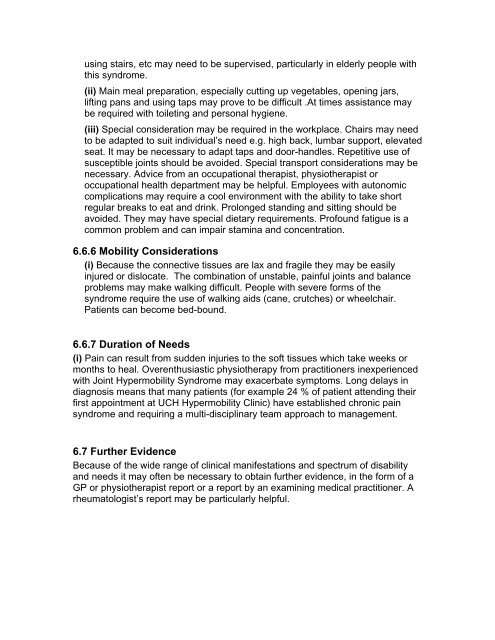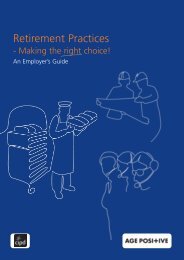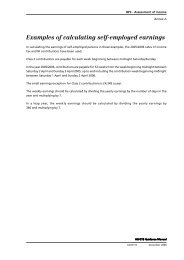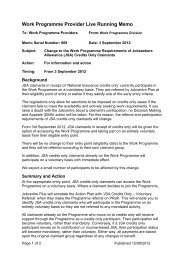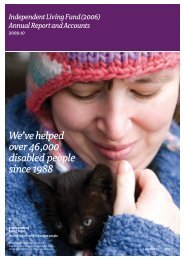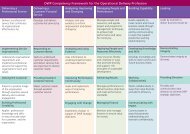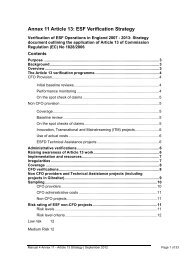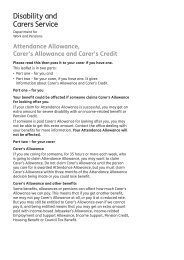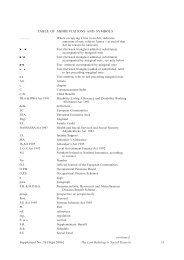Arthritis, rheumatism, musculo-skeletal and rheumatological disorders
Arthritis, rheumatism, musculo-skeletal and rheumatological disorders
Arthritis, rheumatism, musculo-skeletal and rheumatological disorders
You also want an ePaper? Increase the reach of your titles
YUMPU automatically turns print PDFs into web optimized ePapers that Google loves.
using stairs, etc may need to be supervised, particularly in elderly people with<br />
this syndrome.<br />
(ii) Main meal preparation, especially cutting up vegetables, opening jars,<br />
lifting pans <strong>and</strong> using taps may prove to be difficult .At times assistance may<br />
be required with toileting <strong>and</strong> personal hygiene.<br />
(iii) Special consideration may be required in the workplace. Chairs may need<br />
to be adapted to suit individual’s need e.g. high back, lumbar support, elevated<br />
seat. It may be necessary to adapt taps <strong>and</strong> door-h<strong>and</strong>les. Repetitive use of<br />
susceptible joints should be avoided. Special transport considerations may be<br />
necessary. Advice from an occupational therapist, physiotherapist or<br />
occupational health department may be helpful. Employees with autonomic<br />
complications may require a cool environment with the ability to take short<br />
regular breaks to eat <strong>and</strong> drink. Prolonged st<strong>and</strong>ing <strong>and</strong> sitting should be<br />
avoided. They may have special dietary requirements. Profound fatigue is a<br />
common problem <strong>and</strong> can impair stamina <strong>and</strong> concentration.<br />
6.6.6 Mobility Considerations<br />
(i) Because the connective tissues are lax <strong>and</strong> fragile they may be easily<br />
injured or dislocate. The combination of unstable, painful joints <strong>and</strong> balance<br />
problems may make walking difficult. People with severe forms of the<br />
syndrome require the use of walking aids (cane, crutches) or wheelchair.<br />
Patients can become bed-bound.<br />
6.6.7 Duration of Needs<br />
(i) Pain can result from sudden injuries to the soft tissues which take weeks or<br />
months to heal. Overenthusiastic physiotherapy from practitioners inexperienced<br />
with Joint Hypermobility Syndrome may exacerbate symptoms. Long delays in<br />
diagnosis means that many patients (for example 24 % of patient attending their<br />
first appointment at UCH Hypermobility Clinic) have established chronic pain<br />
syndrome <strong>and</strong> requiring a multi-disciplinary team approach to management.<br />
6.7 Further Evidence<br />
Because of the wide range of clinical manifestations <strong>and</strong> spectrum of disability<br />
<strong>and</strong> needs it may often be necessary to obtain further evidence, in the form of a<br />
GP or physiotherapist report or a report by an examining medical practitioner. A<br />
rheumatologist’s report may be particularly helpful.


